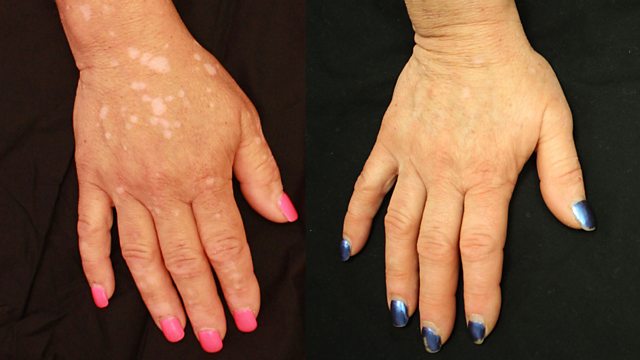A Clever New Cure for Vitiligo?
A new way of treating vitiligo using a rheumatoid arthritis drug, research terms association and causation and the psychologist whose first job was to treat people after 7/7
Vitiligo is an autoimmune condition which causes the skin to lose its pigment and affects about 1% of people worldwide. Steroids or light therapy are the only treatment available, but they are often ineffective. New treatments are potentially on the horizon though: Recent scientific understanding of the condition led a doctor at Yale University School of Medicine to come up with the idea of trying a drug normally used for rheumatoid arthritis. Dermatologist Brett King used the drug on Linda Lachance and within five months of treatment she had experienced significant repigmentation. The details of this case study have just been published in the Journal of the American Medical Association Dermatology.
Causation v Association
How can you work out how good a study is? One thing to look for is the difference between causation and association. Research may show, for instance, that people with lower than average vitamin D levels are more likely to get bowel cancer, but that does not mean that boosting levels of the vitamin will protect against the disease. Family doctor Margaret McCartney and Carl Heneghan, professor of Evidence Based Medicine at the University of Oxford explain the differences between causation and association.
London Bombings
It is almost a decade since bombs were detonated on three tube trains and a bus in London, killing 52 and injuring more than 700. Unusually the authorities in London took the step of proactively contacting people caught up in the bombings who were at risk of developing mental health problems, even phoning them at home to see if they might benefit from treatment. Not everybody caught up in an event like this develops post-traumatic stress disorder or PTSD, but in this case they found a significant minority were experiencing symptoms.
For the newly qualified clinical psychologist, Rachel Handley, her very first job was to provide cognitive behavioural therapy. She spent the next two years talking to people about their experiences and helping them to find ways of coping. Ten years on she tells Claudia about what sort of difficulties people came to her with.
(Photo: Before and after vitiligo treatment. Credit: Dr. Brett King)
Last on
Broadcasts
- Wed 1 Jul 2015 18:32GMT大象传媒 World Service Online
- Wed 1 Jul 2015 23:32GMT大象传媒 World Service Online
- Thu 2 Jul 2015 04:32GMT大象传媒 World Service Online
- Thu 2 Jul 2015 15:32GMT大象传媒 World Service Online
Podcast
-
![]()
Health Check
Health issues and medical breakthroughs from around the world.


